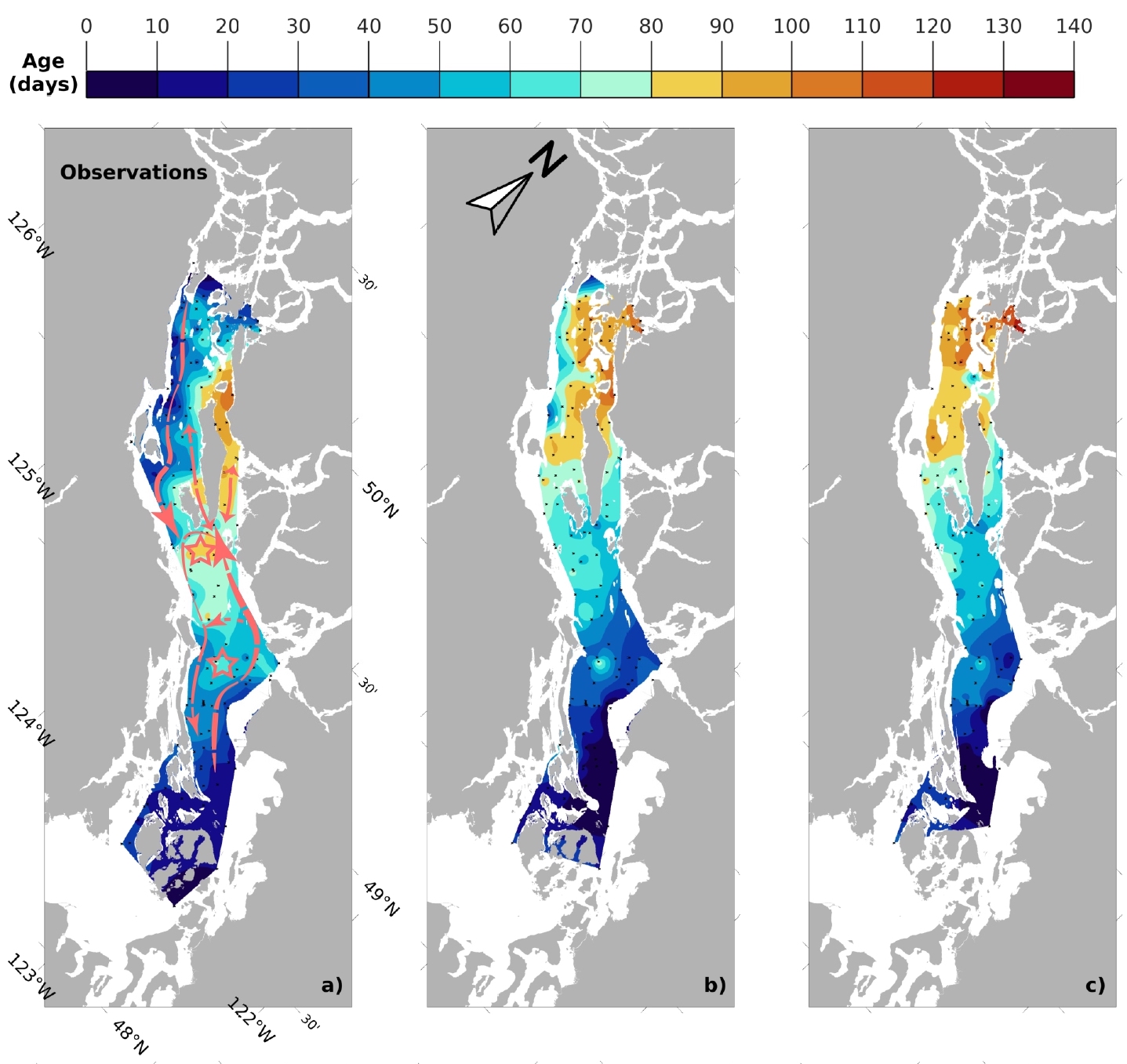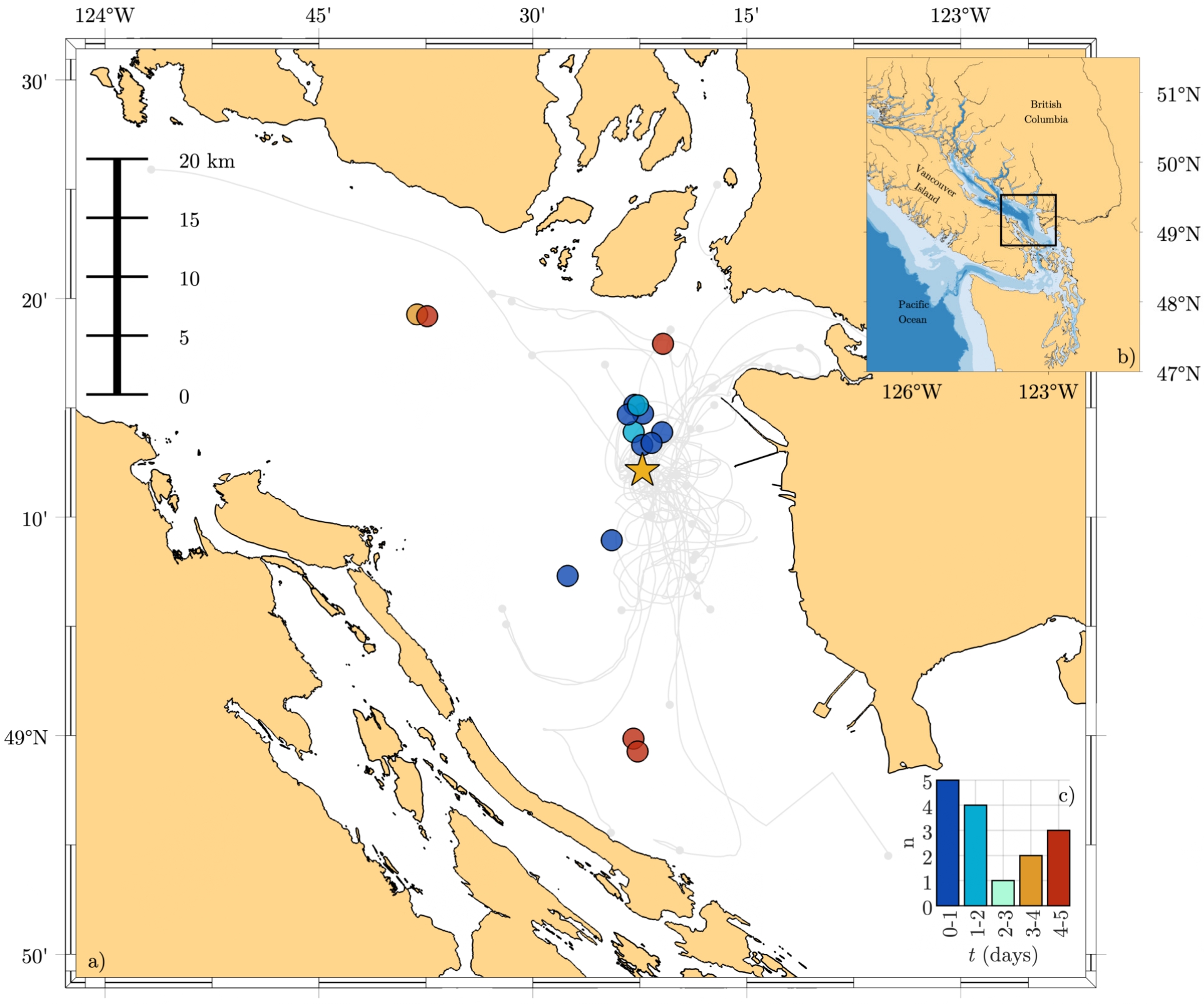The Salish Sea, with its ancestral name, holds deep cultural significance for the First Nations people who have cared for its waters for generations. Conducting my PhD research in and around the Salish Sea has been a privilege, and I am grateful for the ongoing stewardship by these communities. I acknowledge their connection to the Salish Sea, and I hope to continue learning from and working alongside them for its preservation.
The Greater Vancouver area has a population of over 2.5 million people. Where does all of the wastewater from this population go? After it has been treated in various treatments plants, it is released underwater in nearby coastal waters via various different outfalls. Though it has been treated, some persistant pollutants remain and it is important to know where these pollutants go and how they are building up in the coastal system.

My research in the Strait of Georgia— the deepest, largest basin of the inconnected waterways that form the Salish Sea— is part of a larger multidisciplinary project aiming to investigate the impact of various factors, such as circulation, mixing, biological productivity, and turbidity, on the dispersal and elimination of harmful pollutants.
My role in this project is to measure and analyze the intermediate water circulation, focusing on how it varies in both space and time. My wider goal is to provide a foundation for understanding the biogeochemical measurements made during the project by providing transit time distributions and simple circulation models. The arrows on the figure above show our understanding of how, on average, water through the area at intermediate depths.
